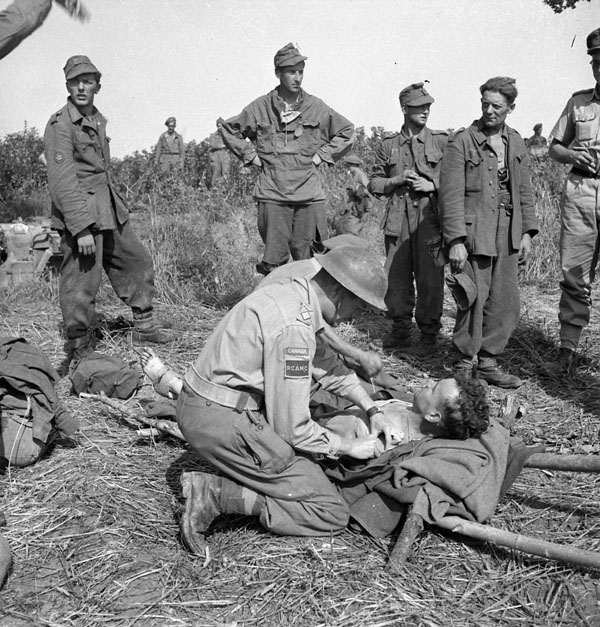 |
|
Forces canadiennes avançant de la ligne Gustav vers la ligne Hitler.
|
The Lord Strathcona's Horse war diary lists the soldiers killed in the confrontation on 24 May 1944. John Milroy recorded the casualties in his CMH article: "The battle cost the Strathcona's 17 tanks for the destruction of five German tanks, eight selfpropelled guns and various other equipment. Two officers and 18 other ranks were killed; seven officers, including the second-in-command and the "A" and "C" Squadron commanders, and nine other ranks, were wounded."
The Strathcona's had advanced by using ground considered not-tank-country, and surprised German Panther tanks and guns on the far side of the Melfa River which were covering a more passable ford. The action was an anomaly of armoured combat in the Italian campaign as a tank duel erupted between the panthers across the river and 'A' and 'C' squadrons of the Straths. The confrontation would be a rough initiation to the grim side of warfare for many of the Canadian soldiers. Some would not live through it.
Four crew would perish in the tank CONNOLLY, reported "hit by 88" on 24 May, and burned with its crew inside. The men were commanded by Capt R.G. Crimes whose next of kin was listed as his father who lived in Halifax, but may have been from St. Thomas, Ontario. Captain Crimes commanded a western crew whose driver had the remarkably low army identification number of, H-46. Thirty-year old Trooper Albert P. "Bud" Lee's wife, Mrs. Rita Pearl Lee, lived in Portage la Prairie, Manitoba. The bow gunner A.A. "Smitty" Smith was said to "chum" with "Bud" Lee. His father resided in Saskatoon. Trooper George.T.Davis "Davey" was the gunner operator. His father lived in Vermillion, Alberta.
The men were first interned in a cemetery on the Melfa, but were transferred to the Cassino War Cemetery. They were four men out of the millions who perished in the Second World War. The Commonwealth War Graves lists 27 men with the name of A.A. Smith alone. Despite the immensity of the conflict, the individuals who lived and died are important. A glimpse into their lives gives a human meaning to the casualty figures.

No comments:
Post a Comment